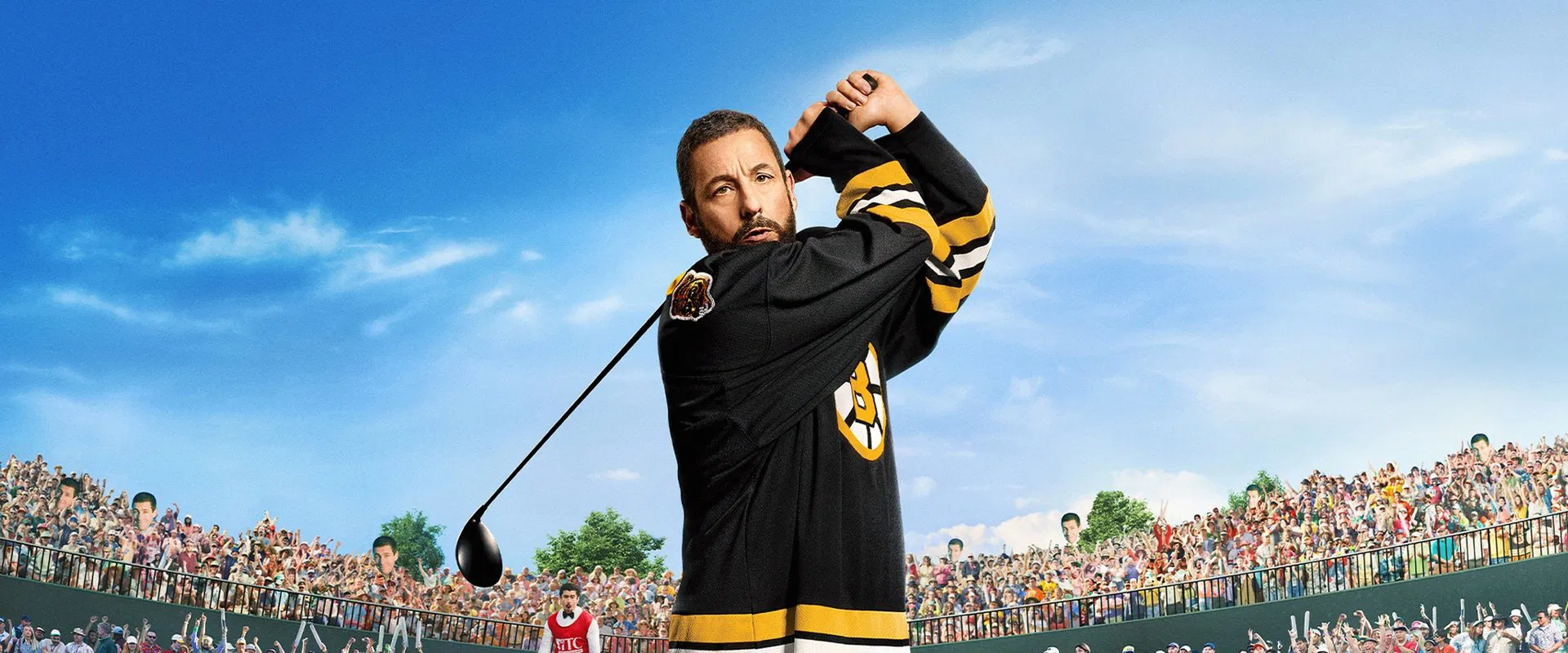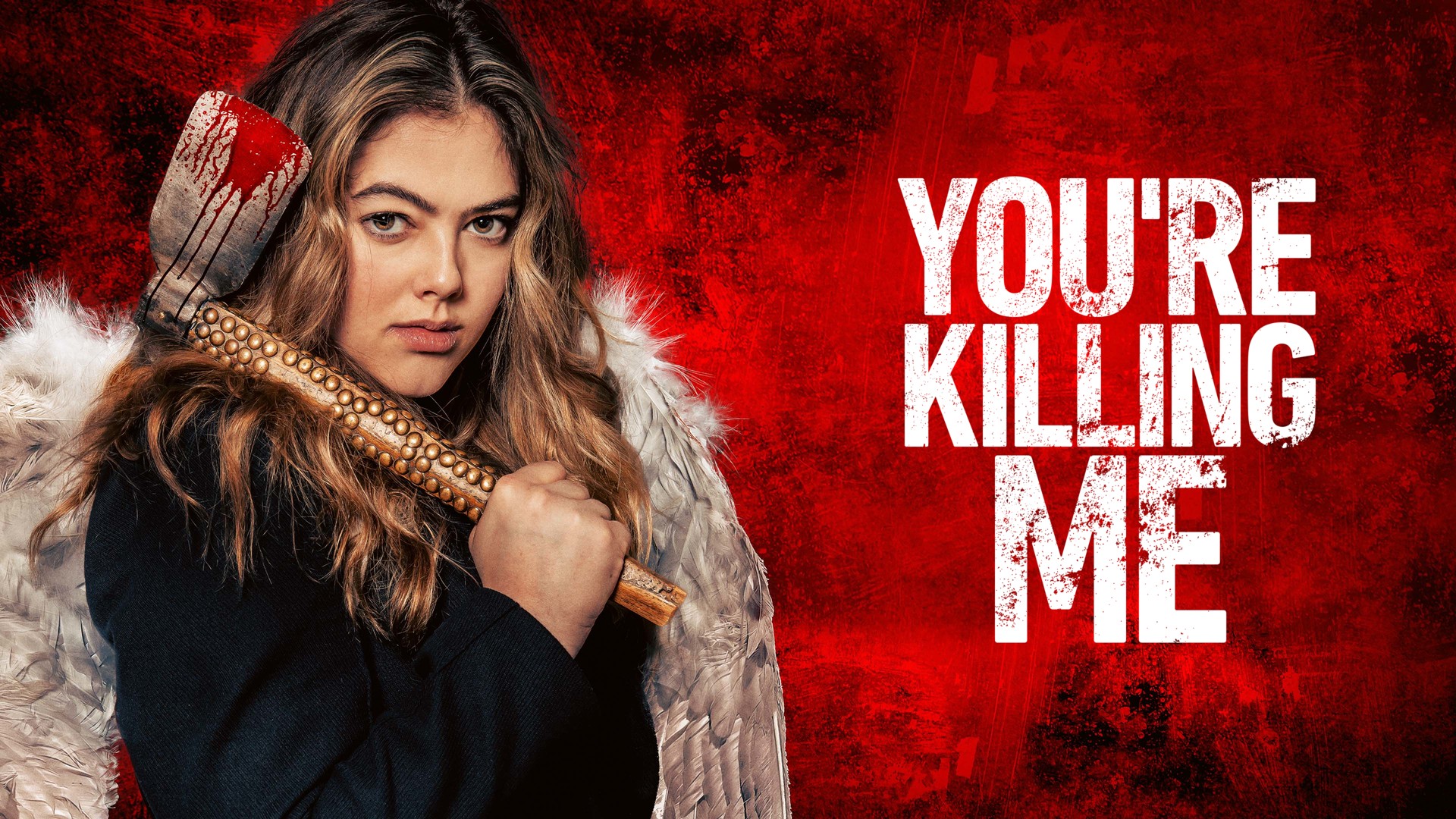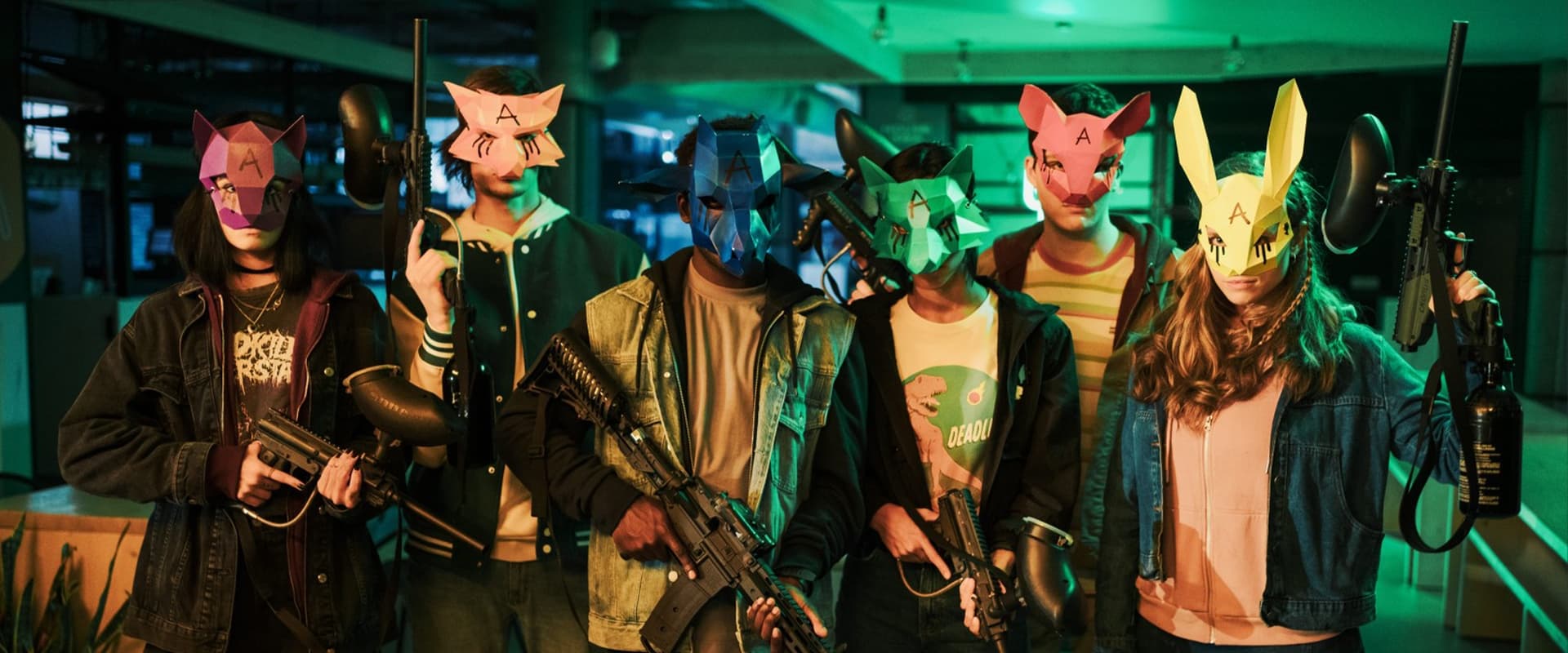If the original Happy Gilmore was the cinematic equivalent of being blindsided by a pie in the face. A pie filled with golf balls, beer, and genuine pathos, then Happy Gilmore 2 is what happens when someone throws three pies at you at once, turns the sprinklers on mid-swing, and then asks if you remember the taste of the original filling. It’s a legacy sequel that, for all its Frankensteinian splicing of silly and serious, still manages to resurrect Sandler’s battered but buoyant Happy with enough vigor to remind us why we ever rooted for this idiot savant and his primal swing.
The opening three minutes don’t just snap your neck; they grab you by the lapels and spin you around. There’s no effort at easing in grief, melodrama, and a blast of winking nostalgia colliding like out-of-control golf carts in a parking lot of memory. Sandler, who at this point in his career has nothing left to prove, except maybe to himself, handles the dramatic moments with the weathered melancholy of a clown who’s made peace with the greasepaint. His silliness is now undergirded by something like real sorrow, and I found, to my surprise (but perhaps not yours), that his swing lands harder when he’s aiming for the heart rather than the funny bone.
But make no mistake, the relentless, often riotous barrage of stupidity is intact, sometimes exhilarating, sometimes wearying. The film’s circus of cameos reads like a dare: Scottie Scheffler in cuffs, John Daly bathing in hand sanitizer (one moment abrasive, the next almost elegiac), and Bad Bunny, yes, that Bad Bunny, nearly running off with the whole show. Bad Bunny as Oscar isn’t just comic relief, he’s the mischievous ghost haunting the margins of this madhouse, and every flicker of screen time he’s given is a gift; he wrings joy from the chaos even as the script seems determined to trip on its own shoelaces.
Let’s not bury the lede: Christopher McDonald’s Shooter McGavin is the glue in this cracked mosaic. Has there ever been a character so gloriously, cartoonishly contemptible? Yet somehow, here, in his post-institutionalized, semi-tragic mode, Shooter becomes that rare sequel gift. The villain you want to hug, the wounded wolf howling alongside Sandler’s battered lion. Their chemistry is still volatile, but it’s newly shaded with a strange, almost tender self-awareness.
It’s when the movie tips its hand, again and again, with those flashbacks to the original that the whole enterprise falters. The constant cutting to yesteryear plays like a studio executive waving a neon sign in your peripheral vision: “REMEMBER THIS?!” There’s an insecurity there that’s almost touching in its anxiety, but mostly, it’s an irritant, the film’s one “mama” joke too many, the echo you wish would just die down and let you enjoy the irreverence of the present. The best legacy sequels trust your memory and your love; this one, endearingly, can’t stop fidgeting, as if terrified you might have outgrown your affection.
And still, what persists is the party atmosphere. A winking embrace of the classically dumb, the preposterous, the id-driven Sandler comedy that’s become its own genre. Kyle Newacheck orchestrates the mayhem with a kind of anarchic generosity, letting the ensemble flex and fumble and faceplant as needed. Benny Safdie is a deliciously odd addition, all hollow-eyed corporate menace, and the walk-on crowd, Steven A. Smith leaping out of the screen to shout you into submission, Margaret Qualley as a living light beam you want to follow back into a more sensible movie, keeps the carousel spinning wildly.
If you do not already love the first film, I beg you: don’t start here. This isn’t for you, and the unruly flock of loyalists deserves its moment of sunburned, slapstick communion. This sequel is a drunken family reunion. Sometimes tedious, frequently mortifying, but somehow essential if you’re one of the clan. Just as the original snuck in real feelings beneath the guffaws, this one, in its best moments, recaptures a flicker of sincerity: Sandler, a little slower but still game, still swinging for the fences with his busted, beloved clubs.
Happy Gilmore 2 is a minor miracle for its target audience, a messy, ignoble, and (God help us) moving bender of a legacy sequel. It’s for fools like us, stuffed to the gills with nostalgia and nacho cheese. It’s not for the world. It’s for the idiots, and sometimes, the idiots win.


